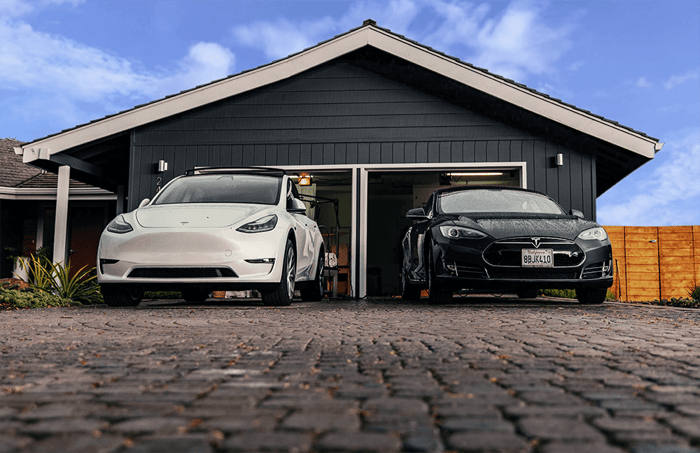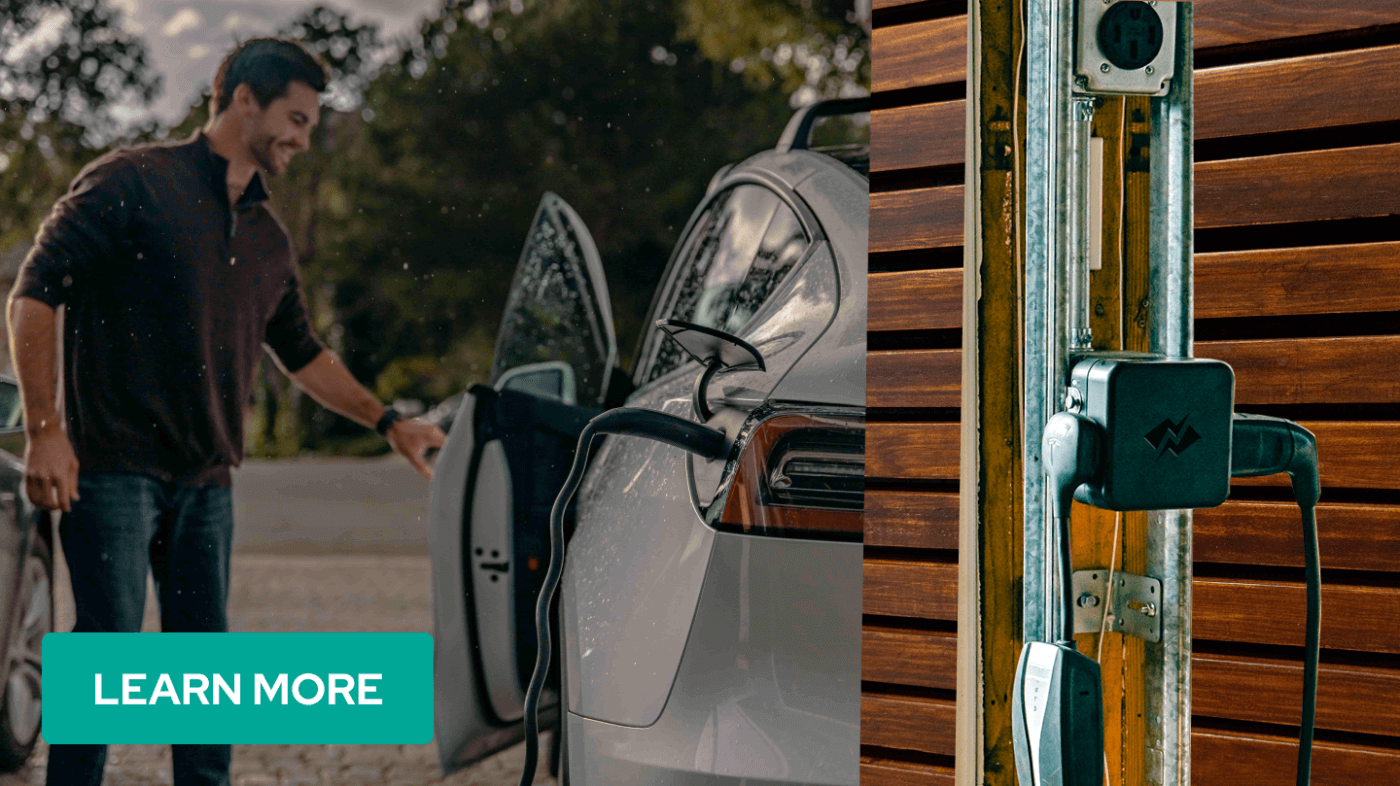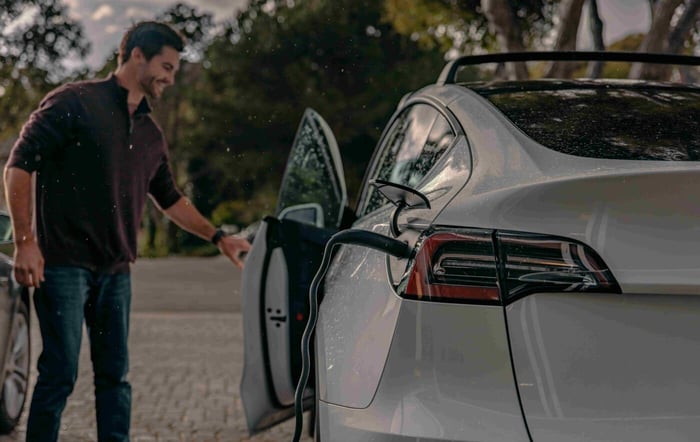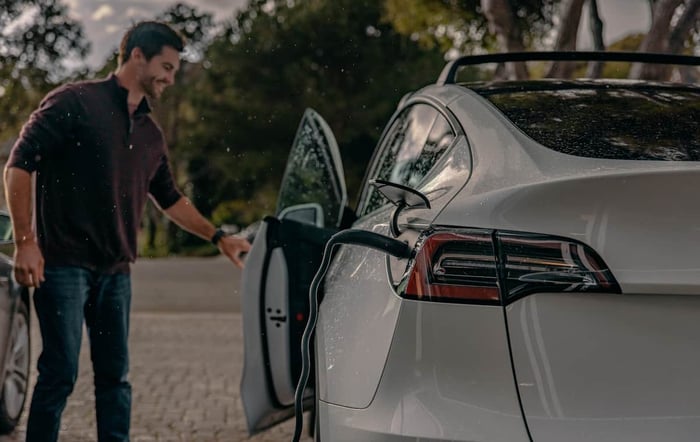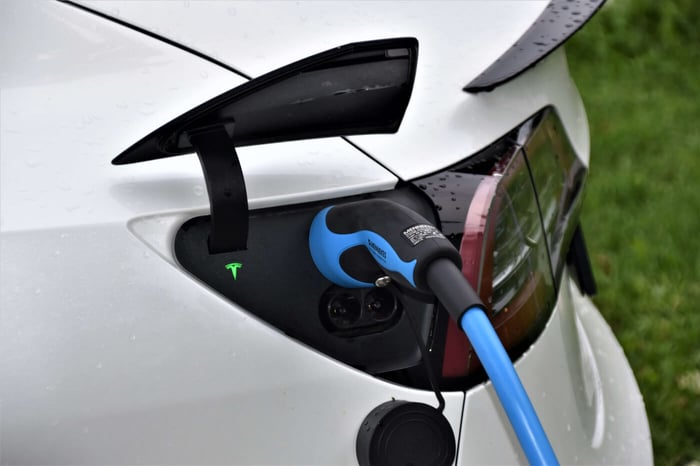One of the first questions many first-time electric vehicle buyers ask is, “how do I charge my electric car at home?” While it may be intimidating at first, it is actually a lot more simple than you might think! That is why there are already millions of EVs on the road today.
In fact, charging an electric car at home is very similar to charging a cell phone. And since most EV drivers charge at home overnight, it takes zero amount of your time. Let’s explore how really easy it is to charge an EV and ways you can save money on home EV charging!
Level 1 vs Level 2 Charging
There are two levels of EV charging at home: Level 1 and Level 2. Level 1 charging utilizes the regular 120 volt (V) outlet. This outlet is used for everyday electronics such as TVs, toasters, coffee makers, cell phone chargers, and, yes, even home EV chargers.
On the other hand, Level 2 charging utilizes a 240V outlet. The easiest way to tell the difference between level 1 and level 2 charging is by the outlets. Level 2 uses a three or four prong outlet whereas level 1 uses the regular outlet you plug in your phone with. The 240V outlet is typically used for electric dryers, ranges, or welders.
Level 2 charging is much quicker than Level 1, though may require some electrical work to get installed. Costs can vary to install a new 240V, though it typically is around $800 to $4,000. Luckily there is another option for you that helps you save money by sharing your existing 240V outlet.
One great way to reduce Level 2 charger installation costs is to use an existing 240V outlet. In homes where there is already a 240V (i.e. your electric dryer outlet), the Smart Splitter can simply plug into the outlet to create two 240V outlets—one for the dryer and one for the Level 2 EV charger.
The Smart Splitter intelligently and automatically switches electricity to the appliance in need of power. By using existing infrastructure, you can save thousands of dollars on your home EV charging installation costs.
How Much Does a Home EV Charger Cost?
The cost of home EV chargers (technically called Electric Vehicle Supply Equipment or EVSE) vary depending on the charger's features. Some chargers are basic in function—simply plug them into the wall outlet and plug the charger into the car to begin charging. On the other hand, others are more advanced as they are smart/Wi-Fi connected. For the ones that are smart, they include features such as scheduled charging, adjustable amperage, access control, smartphone app integration, electricity usage data, and more.
A non-smart/Wi-Fi connected Level 2 charger costs around $400 while a smart/Wi-Fi connected Level 2 charger costs around $600. Level 1 chargers cost a bit less than Level 2 chargers, however, the majority of EVs are sold with a portable Level 1 or Level 2 charger depending on the maker. For example, Tesla and Ford provide a Level 2 and Level 1 mobile charger using 240V/40A NEMA 14-50 wall outlets and a standard 120V/12A wall outlet.
Range (Miles) Added Per Hour of Charging
So how much faster is Level 2 (240V) charging than Level 1 (120V)? Well, Level 1 charging can add around 4 miles of range for every hour of charging while Level 2 charging can add around 25 miles of range. This is why Level 1 charging is known as “trickle charging” and why Level 2 charging is the recommended way to charge an EV at home.
Given that the average daily commute is around 35 miles, you would only need to charge for an hour or two every day with Level 2 charging. As you can see, charging an EV doesn't take that much time. Even further, per the Department of Energy, 80% of EV drivers charge their car overnight at home—just like a cell phone!
When Should You Charge an Electric Car at Home?
Overnight! Not only is charging at EV overnight convenient since you are typically not using the car, but it is also the cheapest way to charge. Most electric utility companies offer Time of Use (TOU) electric rate schedules. With TOU, rates vary depending on the time of the day. In most cases, the evening and night hours are the cheapest as the demand is low.

It just so happens to be a perfect time to charge an EV at home. With TOU, however, the hours of the day to avoid is mid to late afternoon. This is when the grid demand is at its peak. Therefore, electric rates will increase accordingly.
Charging an EV Away From Home
For trips that are more than the EV's range or when traveling on a long road trip, it may be necessary to stop and charge at a public charging station. You can check out nearby public charging stations on the Plugshare map below or you can download the Chargeway app if you are looking for a route-planning app.
These types of charging stations come in Level 2 and Level 3 charging levels. Similar to how Level 2 is faster than Level 1, Level 3, or more commonly known as DC Fast Charging, is much faster than Level 2. At a DC Fast Charging Station, expect to charge from 10% to 80% in around 30 minutes.
These types of EV charging sessions are a great time to stretch the legs, grab a bite to eat, or use the restroom during long trips. While DC Fast Charging stations may seem few and far between, more are being built every day across the U.S. However, home charging retains the vast majority of charging sessions where it is cheaper and more convenient.
Quick Recap
- Level 1 charging (120V, regular outlet) provides 4 miles of range per hour.
- Level 2 charging (240V, electric dryer outlet) provides 25 miles of range per hour. Common 240V outlets include the NEMA 14-50 (EV charger outlet), NEMA 14-30 (4 prong dryer outlet), and the NEMA 10-30 (3-prong dryer outlet).
- The cost to install a 240V outlet and Level 2 charger is around $800 to $4,000, depending on your setup.
- Save on 240V outlet installation costs with the NeoCharge Smart Splitter.
- The best time to charge is overnight when your Time of Use (TOU) electricity rates are the lowest.
- Charging away from home is possible with public charging stations.
- After some practice, electric car charging at home is really easy!



